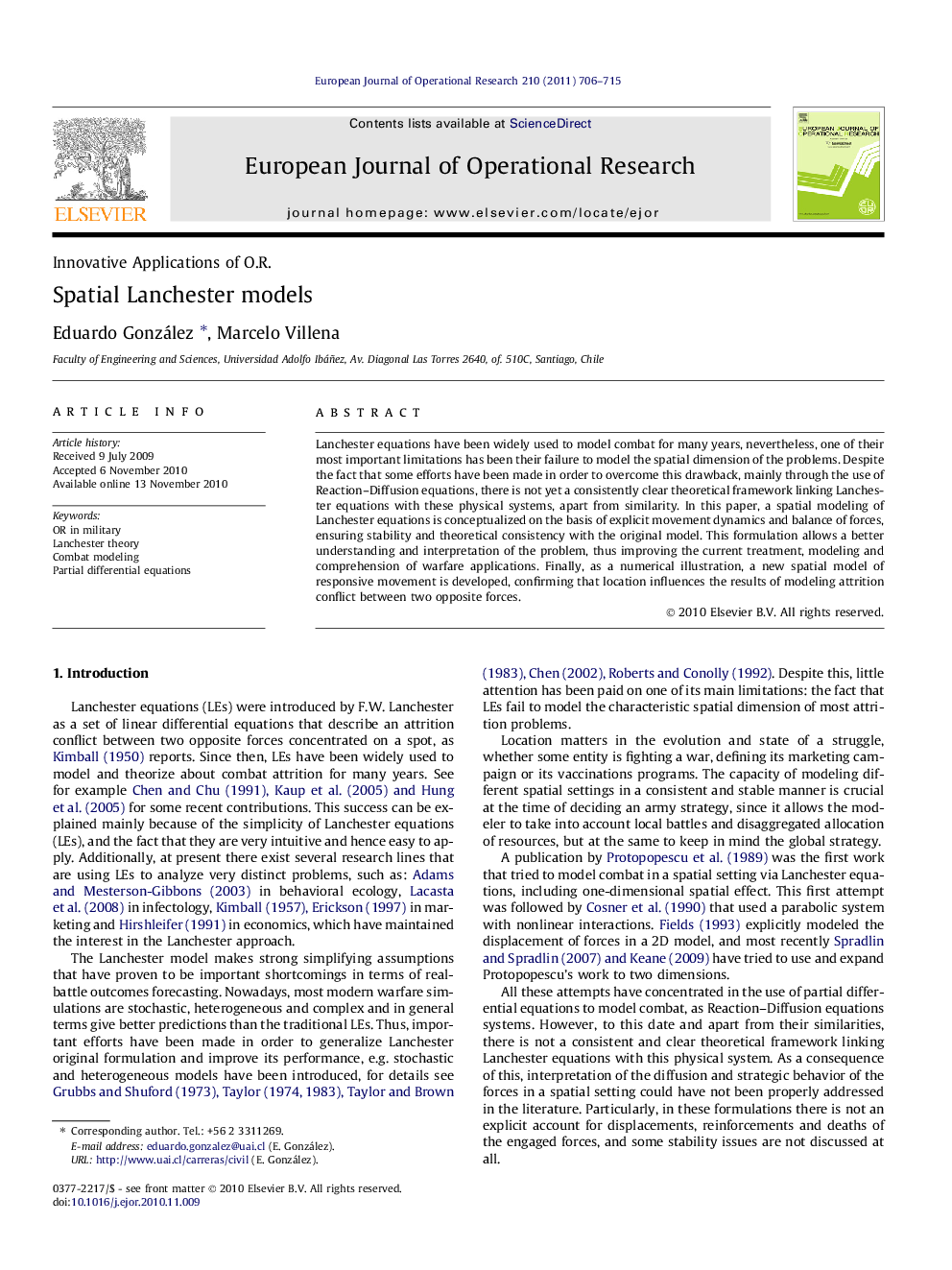| Article ID | Journal | Published Year | Pages | File Type |
|---|---|---|---|---|
| 478548 | European Journal of Operational Research | 2011 | 10 Pages |
Lanchester equations have been widely used to model combat for many years, nevertheless, one of their most important limitations has been their failure to model the spatial dimension of the problems. Despite the fact that some efforts have been made in order to overcome this drawback, mainly through the use of Reaction–Diffusion equations, there is not yet a consistently clear theoretical framework linking Lanchester equations with these physical systems, apart from similarity. In this paper, a spatial modeling of Lanchester equations is conceptualized on the basis of explicit movement dynamics and balance of forces, ensuring stability and theoretical consistency with the original model. This formulation allows a better understanding and interpretation of the problem, thus improving the current treatment, modeling and comprehension of warfare applications. Finally, as a numerical illustration, a new spatial model of responsive movement is developed, confirming that location influences the results of modeling attrition conflict between two opposite forces.
